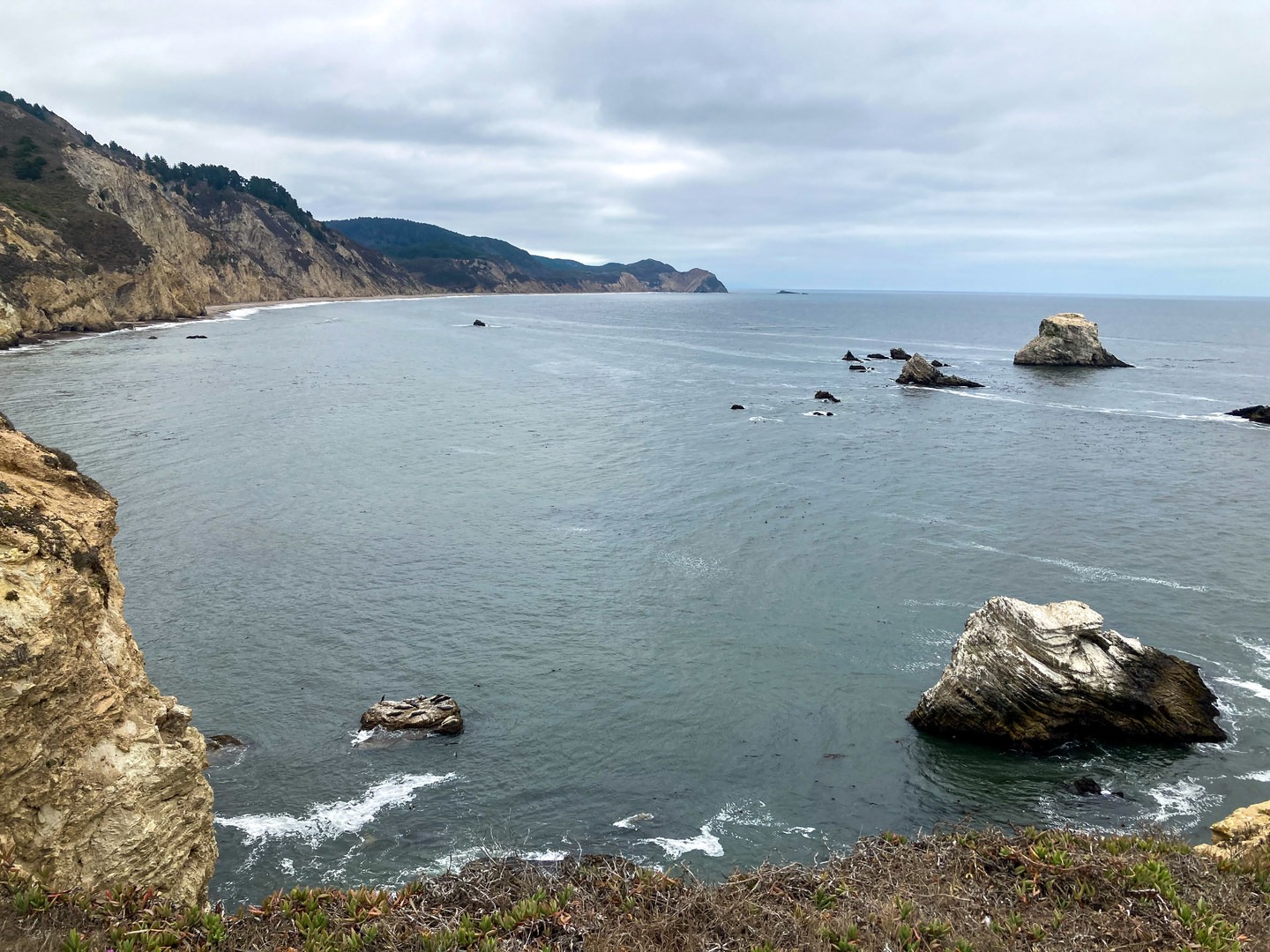You are here
Keyhole isn’t a well-known place but that makes it so much more beautiful. It offers a look into the geological processes that form the coast of Point Reyes, from the creation of sedimentary rock at the bottom of an ancient ocean to its tilting as it was pushed up to its most-recent breaking and slow return back to sand and the bottom of the Pacific, where it will, once again, begin a new life cycle. Besides geological wonder and steep cliffs, a lucky traveler might get to see seals that like to occasionally hang out around Keyhole.
Start at Bear Valley Visitor Center. Head to the end of the road, walk past the gate, and head out on Bear Valley Trail, which is a wide and smooth service road. Stay on the road for 4.2 miles; you’ll walk through Divide Meadow and the road will turn into a wide trail about halfway through at a trail junction with a bicycle rack (walk straight through that junction).
After you arrive at a trail fork where Bear Valley Trail joins Coast Trail, choose the left path to head southward on Coast Trail. Follow it as it crosses over a small wooden bridge and starts climbing up a hillside. You’ll reach Keyhole after half a mile; take the small single trail that will appear on the right. Neither the trail nor the signage are obvious; if you start climbing a steep hill above where the cliffs collapsed, you’ve gone too far.
Depending on the time of year, you might get to see some seals lounging on the rocks that stick out from the shallow waters near Keyhole. (On some maps, Keyhole is also called Millers Point.) To the south, you’ll see the coastline and collapsed coastal cliffs, also known as Temple. It’s not hard to imagine why they’ve been given that name; their size of the cliff is awe-inspiring.
Depending on visibility, you might also catch a glimpse of the Farallon Islands (this opportunity will also arise as you make your way up into the hills of Point Reyes). To the north, you’ll see a chunk of the coastline that broke off a few years ago. It displays beautiful layers of sedimentary rock. You’ll see that they are horizontal. However, they are horizontal only because the boulder itself tilted when it broke off; the rock you’re standing on has been tilted as it traveled up from the bottom of an ancient ocean, and the layers of rock, therefore, sit at an angle, nearly vertical.
After you’ve enjoyed this geological marvel and listened to the calls of the seals, retrace your steps back to the junction of Coast Trail and Bear Valley Trail. Take a sharp left turn at the junction to stay on Coast Trail and follow it for 0.6 mile until you reach the beginning of Sky Trail.
Turn right onto Sky Trail and begin the relentless climb. You’ll hike along the border and enter the burn zone of the 2020 Woodward Fire. Follow the trail for 4 miles, resisting the temptations to take a turn onto the 2 trails that branch off to the right and dip back to Bear Valley Trail. When you’re about three-quarters through, you’ll see Woodward Trail turning to the left. Right there is a small patch of grass that’s an ideal spot for a lunch break. The bulk of the climbing is done when you reach this trail junction.
After 4 miles on Sky Trail, at the junction following the above-described lunch spot, turn right onto Meadow Trail. Follow it for 1.6 mile as it brings you back down into Bear Valley. At the bottom of the trail, cross the small wooden bridge and turn left onto Bear Valley Trail. Follow the service road for just under one mile and you will have reached the visitor center.
Logistics + Planning
Current Weather: Powered by Dark Sky
























Comments
Sign In and share them.